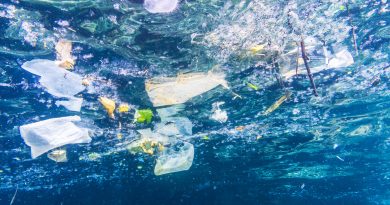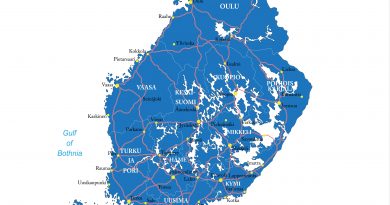‘Uber for icebreakers’ idea gains traction in U.S. Senate

This was the year Congress was finally going to spend some serious money to build an icebreaker. A Senate spending bill has $750 million for a new icebreaker, which would bring the Coast Guard’s fleet to three. But that money is caught in a fight over whether to build President Donald Trump’s wall at the southern border.
Still, there’s more than one way to break ice. Some propose to use private and foreign ships to help fill the expected demand for commercial icebreaking.
Polar Institute Director Mike Sfraga, of Fairbanks, says it would be like Uber, but instead of a person calling for a car, it would be a commercial ship calling for the support vessels needed to transit Arctic waters.
“The idea of Uber for icebreakers, a St. Lawrence Seaway model, that could collaborate among the northern countries in making a pathway across the North – so that there’s escort, there’s search and rescue, it’s paid by fees of commerce – that might be a really good model to take a look at, because that’s the future,” Sfraga said at an Arctic roundtable in the U.S. Senate last week.
The Northern Sea Route model
The Russian Arctic saw record traffic in 2018, with tankers, cruise ships and cargo ships. Russia charges for icebreaking and other services along the Northern Sea Route.
Sfraga says by 2030 or 2040, commercial ships will be more interested in “across the top” routes, beyond the shipping lanes Russia controls.
More infrastructure needed
But barriers remain for Arctic shipping. Even with years of dramatically shrinking sea ice, the travel season only lasts for days or weeks. And Sen. Lisa Murkowski (R-AK) says fee-based icebreakers would still need a lot of support infrastructure. She sponsored a bill last month that calls for building deepwater ports in northern Alaska.
“Not just one port but a system of Arctic ports, ports of refuge for ships in trouble and ports to send, receive, and transship goods and people,” Murkowski said on the Senate floor in support of her bill. She also likened it to “Uber for icebreakers.”
Key Congress members of both parties, in the House and Senate, support building new Coast Guard icebreakers, but, at least for now, that call is drowned out by the debate over security at the southern border.
Related stories from around the North:
Canada: Canada ill-prepared for Arctic shipping boom, G7 sustainability summit hears, Eye on the Arctic
Finland: Cold winter brings out Finland’s icebreakers ahead of schedule, Yle News
Norway: December sea ice levels in Arctic Europe at record low, The Independent Barents Observer
Russia: New icebreaking tankers sailing through Russia’s thick Arctic ice, The Independent Barents Observer
Sweden: Swedish icebreaker reaches North Pole for climate study, Radio Sweden
United States: World maritime body approves first Arctic ship routing measures, Radio Canada International



